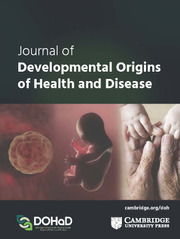Article contents
New challenges beyond nutrition: c-section, air pollution and domestic violence
Published online by Cambridge University Press: 28 September 2015
Abstract
The DOHaD research field has successfully associated adult non-communicable diseases with inadequate nutrition in early periods of life. More recently, different types of exposure have been linked with impaired developmental outcomes and later health consequences, such as cesarean section at delivery, air pollution and domestic violence during pregnancy. The aim of this work is to bring up this issue looking at the published evidence on these three highly prevalent hazards in Latin American countries.
- Type
- Brief Report
- Information
- Journal of Developmental Origins of Health and Disease , Volume 7 , Issue 3: Themed Issue: Ibero-American DOHaD Society , June 2016 , pp. 253 - 256
- Copyright
- © Cambridge University Press and the International Society for Developmental Origins of Health and Disease 2015
References
- 3
- Cited by



